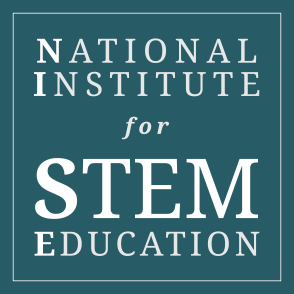As a teacher, you carefully craft your lesson plan to allow students multiple ways to interact with the content. You plan hands-on activities or labs, integrate cooperate learning strategies, and give time to practice calculations. After days of working through content using carefully selected activities enabling students to practice what they are learning, it is time for the assessment. You draft a multiple-choice exam covering the material, grade the tests, and record the data. But how do you know what they really learned? Did the students who scored poorly on the assessment not learn anything? Did the students who scored well really master the material?

Pros of Multiple Choice
Multiple choice tests are, undoubtedly, one of the most common forms of assessment in K-12 classrooms. But before we delve too deeply into the potential pitfalls of multiple choice, it is important to highlight some of the benefits. Oftentimes, multiple choice because they are easy to grade, and the teacher can provide feedback quickly, which is one of the best practices in teaching we emphasize most. They also provide a quantitative measure of student success and a way to compare students to each other and to a benchmark.
Alternative (and Potentially More Effective) Assessments
Multiple-choice is our least favorite form of assessment because it does not really tell us what is going on with student thinking. At NISE, our teacher certification program emphasizes teaching strategies focused on student thinking. In the STEM classroom, it is the thinking we are interested in. For us to truly understand how our students are developing their ideas, integrating new experiences into their existing schema, and progressing toward mastery, assessment beyond multiple choice is crucial.
Alternatives to Multiple Choice
5. Performance-based assessments
Performance-based assessments allow the student to create a product or complete a process as a way that applies skills and knowledge learned from a unit of study. One example of this is to have students do a presentation or report of some kind to demonstrate their understanding of the lesson.
4. Short answer or essay questions
These assessments are open-ended questions requiring the student to craft an answer based on his or her understanding of the topic, enabling the teacher to see the student's thinking and/or identify any misconceptions.
3. Claim-evidence-reasoning
The purpose of a claim-evidence-reasoning activity is to allow students to make a claim regarding a topic, provide evidence to support the claim from their observations, and then logically explain how the evidence supports the claim. Furthermore, as explained in the CER infographic provided by STEMscopes, CERs reveal our own thought process and serves to describe the world around us. This allows teachers when observing their students, to understand the level of which a student grasps a scientific concept, their ability to use appropriate and relevant evidence, and the thought process used to justify how their evidence supports their claim.
2. Lab reports
This assessment can be used as a way to assess student thinking and learning after a laboratory investigation. The student is compelled to focus on the central question and the purpose of the investigation and then provide evidence from data to explain or answer questions.
1 . Summative assessments
Have students complete a project-based assessment demonstrating their comprehension and conclusions. A sample of this would be to complete an experiment for a grade, such as building a volcano and demonstrating how and why it works, then presenting it to the class.
It is unlikely multiple-choice assessments will ever entirely go away; we have come to rely on them for their ability to produce a large of data in a short time. Although multiple choice testing does have a place in classrooms, STEM learning requires a more complete approach to assessment in which teachers are taking the pulse of student learning from start to finish. Our teacher certification program provides multiple opportunities for reflection that will help ensure you are using constant, consistent assessments. For example, look at this sample assessment flow of incorporating regular, continuous assessment.
Repeat similar steps, as often as necessary, until the conclusion of the unit/topic.
Sample assessment flow
| Lesson Phase | Assessment Suggestion |
| Engage | Check for student misconceptions using a four-corners activity. |
| Explore | Check student understanding through small group dialogue. |
| Explain | Check student understanding through large group formative assessment strategies (clickers, whiteboards, etc.) |
| Elaborate | Check student application of understanding through a graphic organizer or nonlinguistic representation. |
| Evaluate | Check student connection of collected evidence to scientific concepts using a claim-evidence-reasoning framework. |
